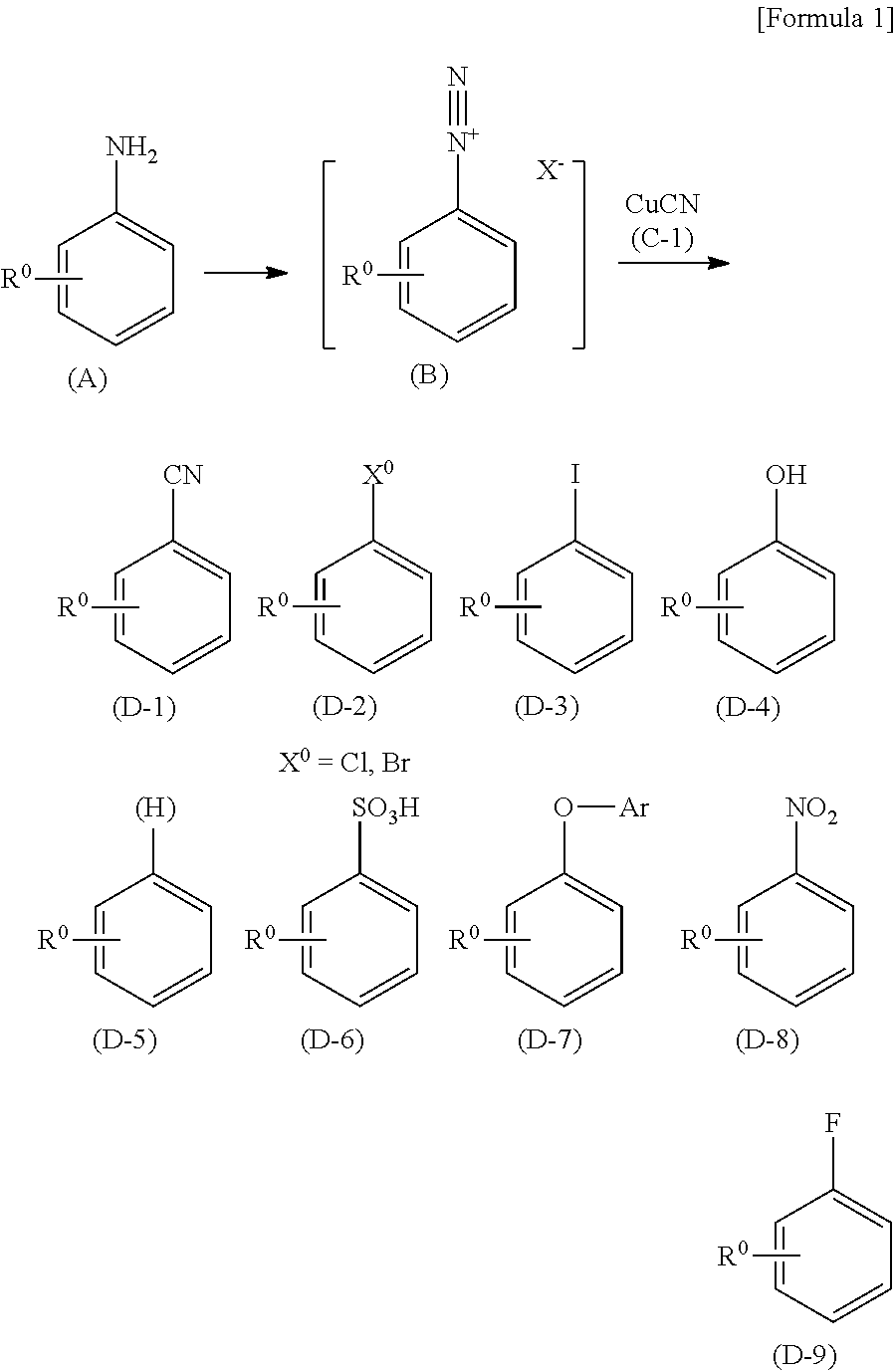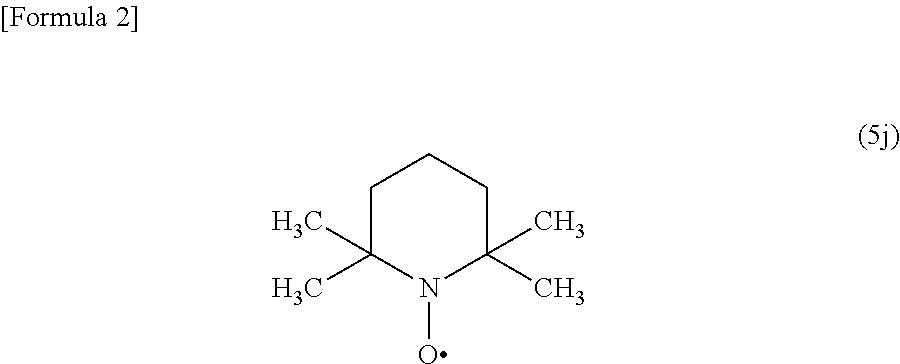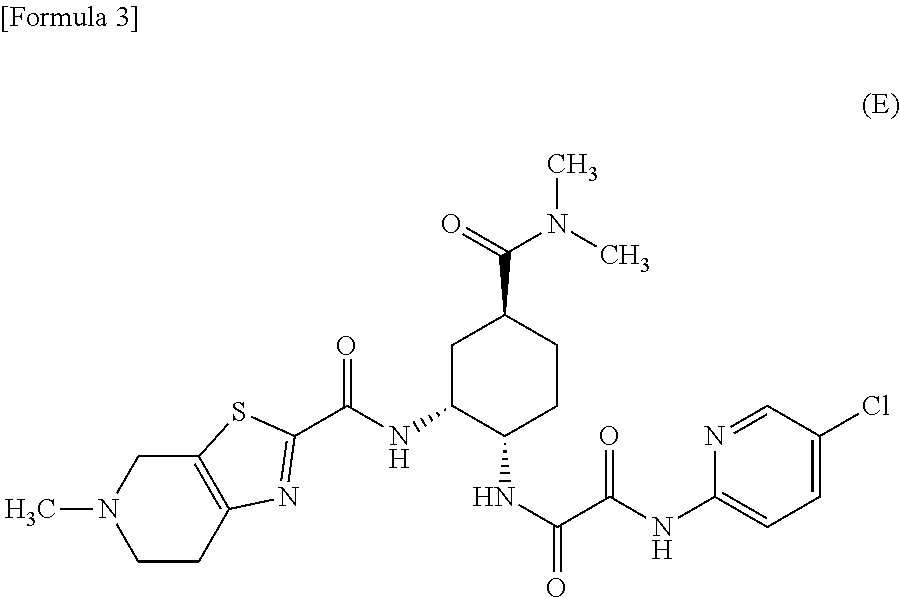Process for preparing a compound by a novel sandmeyer-like reaction using a nitroxide radical compound as a reaction catalyst
a technology of nitroxide radical and reaction catalyst, which is applied in the field of process for preparing a compound by a novel sandmeyer-like reaction using nitroxide radical compound as a reaction catalyst, can solve the problem of not offering high reaction yield
- Summary
- Abstract
- Description
- Claims
- Application Information
AI Technical Summary
Benefits of technology
Problems solved by technology
Method used
Image
Examples
example 1
3-Bromonitrobenzene (1c)
[0358]
[0359]Water (45 ml), acetonitrile (6 ml), and 48% hydrobromic acid (27 ml) were added to 3-nitroaniline (2c) (2.76 g, 20 mmol) at room temperature. To the mixed solution, 2,2,6,6-tetramethylpiperidine 1-oxyl (0.31 g, 2 mmol) was added at room temperature, and the mixture was cooled to 10° C. or lower. Then, sodium nitrite (2.07 g) dissolved in water (15 ml) was added thereto. After stirring at room temperature for approximately 2 hours, a 10 mol / L aqueous sodium hydroxide solution (30 ml) was added thereto, and the precipitated crystals were collected by filtration, washed with water (40 ml), and then dried under reduced pressure to obtain 3-bromonitrobenzene (1c) (3.75 g, 93.0%). The instrumental spectrum data and HPLC retention time (Rt) of the obtained compound (1c) were completely consistent with those of the commercially available compound (1c).
[0360]Likewise, these procedures were performed under the same reaction conditions as above except that C...
example 2
4-Bromobenzonitrile (1d)
[0361]
[0362]Water (45 ml) and 48% hydrobromic acid (27 ml) were added to 4-aminobenzonitrile (2d) (2.36 g, 20 mmol) at room temperature. To the mixed solution, 2,2,6,6-tetramethylpiperidine 1-oxyl (0.31 g, 2 mmol) was added at room temperature, and the mixture was cooled to 10° C. or lower. Then, sodium nitrite (2.07 g) dissolved in water (15 ml) was added thereto. The mixture was heated to 55° C., then stirred for approximately 2 hours, and cooled to room temperature. Then, a 10 mol / L aqueous sodium hydroxide solution (40 ml) was added thereto, followed by extraction twice with toluene (300 ml). The toluene layers were combined and washed with water (50 ml). The solvent was distilled off by the concentration of the toluene layer under reduced pressure to obtain 4-bromobenzonitrile (1d) (3.35 g, 83.0%). The instrumental spectrum data and HPLC retention time (Rt) of the obtained compound (1d) were completely consistent with those of the commercially available ...
example 3
3-Bromo-2-chloropyridine (7)
[0364]
[0365]Water (45 ml) and 48% hydrobromic acid (27 ml) were added to 3-amino-2-chloropyridine (6) (2.57 g, 20 mmol) at room temperature. To the mixed solution, 2,2,6,6-tetramethylpiperidine 1-oxyl (0.31 g, 2 mmol) was added at room temperature, and the mixture was cooled to 10° C. or lower. Then, sodium nitrite (4.14 g) dissolved in water (30 ml) was added thereto. After stirring at room temperature for approximately 2 hours, a 10 mol / L aqueous sodium hydroxide solution (40 ml) was added thereto, followed by extraction twice with toluene (300 ml). The toluene layers were combined and washed with water (50 ml). The solvent was distilled off by the concentration of the toluene layer under reduced pressure to obtain 3-bromo-2-chloropyridine (7) (3.08 g, 80.1%). The instrumental spectrum data and HPLC retention time (Rt) of the obtained compound (7) were completely consistent with those of the commercially available compound (7).
[0366]Likewise, these proc...
PUM
| Property | Measurement | Unit |
|---|---|---|
| completion time lag | aaaaa | aaaaa |
| temperature | aaaaa | aaaaa |
| temperature | aaaaa | aaaaa |
Abstract
Description
Claims
Application Information
 Login to View More
Login to View More - R&D
- Intellectual Property
- Life Sciences
- Materials
- Tech Scout
- Unparalleled Data Quality
- Higher Quality Content
- 60% Fewer Hallucinations
Browse by: Latest US Patents, China's latest patents, Technical Efficacy Thesaurus, Application Domain, Technology Topic, Popular Technical Reports.
© 2025 PatSnap. All rights reserved.Legal|Privacy policy|Modern Slavery Act Transparency Statement|Sitemap|About US| Contact US: help@patsnap.com



